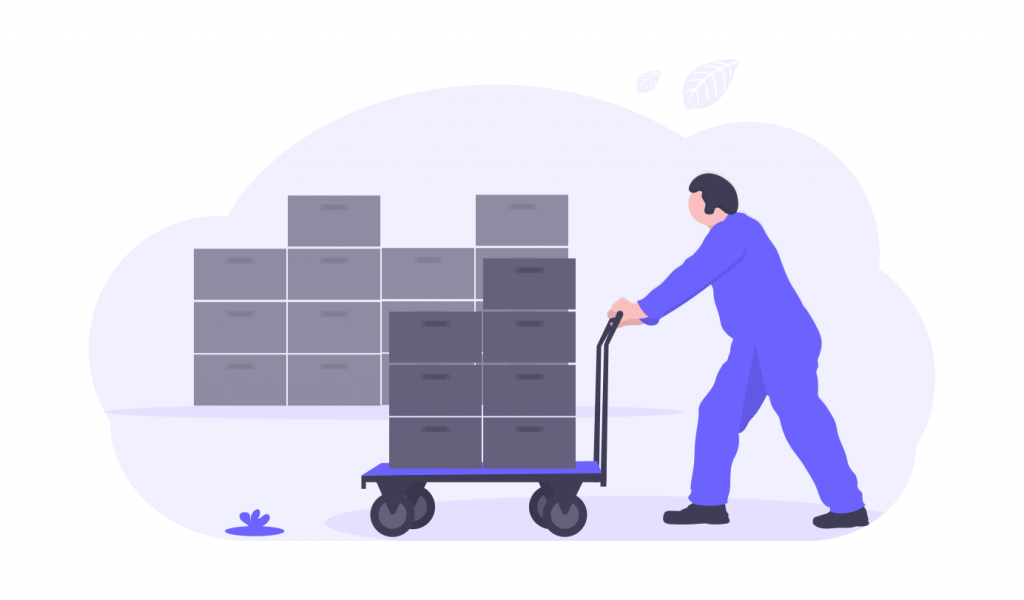5 Reasons to choose an integrated CRM software
More and more companies are now opting to use integrated CRM systems to help track their customer communications and improve engagement.


Discover the benefits of AccelGrid

Convert more leads into revenue

Manage orders at scale

Streamline billing and get paid on time

Rock-solid inventory control

Optimize your supply chain

Switch to lean manufacturing

Sell anywhere, anytime with mobile POS

Simplify accounting and grow your business

Sell more with integrated eCommerce

AI-powered demand forecasting
Convert more leads into revenue
Manage orders at scale
Rock-solid inventory control
Streamline billing and get paid on time
Optimize your supply chain
Achieve lean manufacturing
Sell more with integrated eCommerce
Sell anywhere, anytime with mobile POS
AI-powered demand forecasting
Simplify accounting and grow your business

Businesses worldwide are quickly switching to cloud-based software for running their operations. Due to the enhanced security and stability and the cost benefits it provides, the decision to switch to the cloud is almost a “no-brainer.”
Warehouse management systems have evolved tremendously over the years. The evolution of WMS from bulky, complicated on-premise systems to intuitive, modern web applications is nothing short of fascinating. Some of the best WMS today are cloud-based. In this article, we’ll discuss some of the benefits of a cloud-based WMS and why you shouldn’t think twice before switching.
Some interesting statistics:
The entry-level threshold for a good-quality cloud-based warehouse management system is relatively low when compared with on-premise solutions. The lower cost of ownership makes it possible even for small and medium businesses without an IT team to implement a cloud-based WMS. Since a cloud-based WMS does not require you to invest in expensive servers, database software, and operating systems, you can lower the CAPEX by choosing SaaS. Most cloud-based WMS are subscription-based services with costs spread over time. Typically, a cloud-based WMS pays for itself right from day one. With updates and improvements usually provided at no additional cost, the cost of ownership, in the long run, is significantly lower than traditional on-premise systems.
The implementation time of a cloud-based WMS can take just weeks, which is a whole lot quicker than an on-premise system. The service provider typically takes care of onboarding, configuration, and implementation. It saves a lot of valuable time to focus on running your business rather than get involved in the nitty-gritty of the implementation process. With cloud-WMS, you get to realize returns on your investment significantly quicker.
With traditional, on-premise WMS, the process of scaling up or down is simply cumbersome and expensive. Usually, scaling up means having the necessary hardware resources to handle more SKUs, users, or order volume. As your business grows into more locations, you may need to deploy expensive on-site servers and invest in better networking equipment to enable communication between sites. All of this puts an additional burden on your finances. However, when you need to scale down, you are left with expensive devices that you no longer need and have to write off. A Cloud-based WMS is scalable by design. It can be operated on any web browser without expensive servers and can quickly be deployed to additional warehouses to support your business growth. Moreover, additional users can be enabled on an ad-hoc basis, allowing your business to quickly adapt to meet growing demand or accommodate seasonal peaks.
Data theft and security breaches are a real threat to businesses today. The global average cost of a data breach is a staggering $3.86 million (IBM). Implementing an on-premise WMS requires you to take steps to protect your data against theft and security breaches. Most SMEs find the cost of employing competent cybersecurity consultants prohibitive and take little or no measures to protect their servers. Cloud-based systems, on the other hand, leverage economies of scale to implement sophisticated cybersecurity measures. As a user, you benefit from top-tier cybersecurity without investing tons of money.
A cloud-based WMS empowers businesses to manage inventory operations efficiently without huge upfront and operating costs. It allows companies to focus on core activities such as sales, manufacturing, and marketing. There is high value in leveraging WMS in the cloud, especially systems for businesses that have struggled to stay competitive and tap into the quintessential functions of a modern WMS.
More and more companies are now opting to use integrated CRM systems to help track their customer communications and improve engagement.
Order management software helps you fulfill sales orders efficiently. Learn how to optimize order management and deliver a great experience for your customers.
How do you know which inventory management system is right for you? Find out how you can narrow down your search for the best inventory management system.